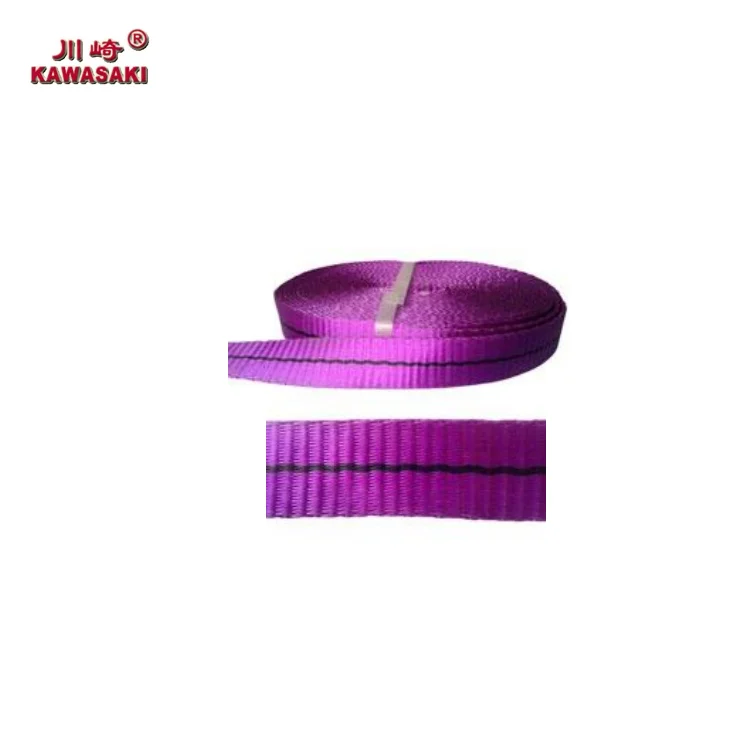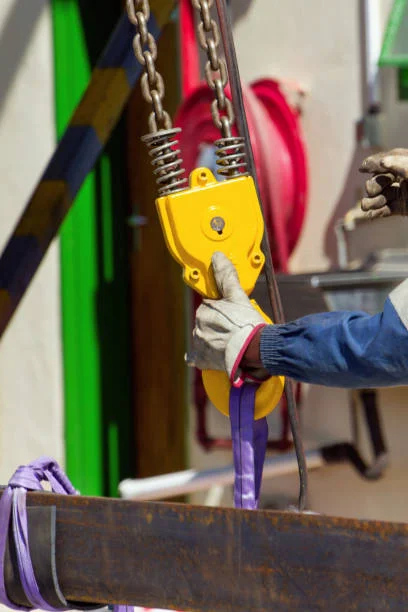In modern industrial lifting, the importance of using the right rigging equipment cannot be overstated. Webbing slings, in particular, play a critical role due to their flexibility, surface protection capabilities, and ease of handling. As businesses look for safer, more efficient ways to manage heavy or sensitive loads, the demand for high-quality webbing slings continues to grow. For manufacturers like APOLLO—home of the Kawasaki brand—this demand is met with durable, compliant, and customizable solutions designed for real-world industrial needs.
Know Your Sling Types
Webbing Slings and How They Fit In
Webbing slings are one kind of lifting tool. Others include chain slings and wire rope slings. Each has its own perks. Webbing slings are awesome because they’re soft and won’t scratch things. They’re great for lifting painted, coated, or oddly shaped items.
Comparing Other Slings
Webbing slings are lighter and more flexible than others. But they might not last as long as chain slings in super tough spots. Knowing these differences helps you pick if a webbing sling is right for your job.
Check Out Material Choices
Polyester: The Go-To Pick
Polyester is the top choice for webbing slings. It doesn’t stretch much, fights off sun rays and water, and works okay with lots of chemicals. Kawasaki’s polyester slings are built to handle tough places and heavy loads. They’re trusty for both inside and outside work.

When to Go for Nylon or UHMWPE
Nylon slings stretch more, which is good for bouncy loads. But they don’t do well in wet or acidic places. UHMWPE slings cost more but are super strong with almost no stretch. They’re perfect for fancy jobs, like in airplane factories.
Pick the Right Sling Build
Sling Shapes and Eye Styles
How a webbing sling is made changes how you use it. Eye-to-eye slings work great for straight-up or basket lifts. Endless slings are more bendy and wear out evenly. Kawasaki offers both, with extra-strong lifting eyes for safety and long life.
How Width and Layers Add Strength
Wider slings spread weight better. They put less pressure on the load. More layers, or plies, make the sling stronger and last longer. Kawasaki lets you choose ply count and width to fit your lifting needs.
Figure Out Load Needs
Matching Sling Strength to Load Weight
Picking the right sling means checking its Working Load Limit (WLL). This must match the weight of what you’re lifting. It’s not just about weight, though. The load’s shape, balance, and lifting style matter too.
Why Sling Angles Matter
Bad sling angles can put extra stress on the sling’s legs. If the angle gets smaller, each leg carries more weight. This could break the sling if you don’t plan right.
Think About the Job Site and Conditions
Picking a Sling for Your Place
Where you lift affects how long a sling lasts. Polyester slings fight off sun rays and mold. They’re great for wet or sunny spots, like docks or building sites.
Protecting Against Scrapes and Sharp Edges
If your load has sharp or rough edges, you need edge guards or wear sleeves. These keep the sling safe. Kawasaki offers add-ons or tougher materials to protect your sling.
Safety Rules and Standards
What Safety Factors Are
A sling’s safety factor shows how much stronger it is than its rated load. A 5:1 safety factor means it can hold five times its load in tests. Kawasaki slings have safety factors from 5:1 to 7:1. This makes lifting super safe.
Standards and Color Codes
Kawasaki slings follow EN 1492-1:2000 and CE/GS rules. They use color codes to show lifting strength at a glance. This stops mix-ups on the job and helps meet OSHA or other safety rules worldwide.
Checking, Cleaning, and Using Slings Right
Look Before You Lift
Checking slings before every use is a must. Look for cuts, frayed spots, faded colors, or weak stitches. If you see any, take the sling out of action right away.
Keeping Slings Clean and Stored
Clean slings last longer. Use mild soap and water to wash them. Dry them well. Store them in a cool, dark spot away from sun or chemicals.
Lifting the Safe Way
Even with the right sling, bad lifting can cause trouble. Pick the right hitch—straight, basket, or choker—based on the load. Kawasaki gives guides and pictures to help you lift safely.
Make a Smart Choice
What to Think About for Your Pick
A good sling choice looks at everything: load type, weight, job site, material, and safety factor. Each job needs a different mix. Skipping steps can make things unsafe.
Why Kawasaki Is a Trusty Pick
With Kawasaki, you get more than just slings. You get a partner with years of lifting know-how. From custom OEM work to tough factory tests, every sling is made to work great and last long.
Extra Tips for Picking the Best Sling
When choosing a sling, think about your job’s needs. For heavy, sharp loads, go for wider, multi-ply slings with edge guards. For wet outdoor jobs, polyester is your buddy. If you’re lifting bouncy stuff, nylon might work better. APOLLO can help you mix and match features. They let you pick length, width, or even colors to fit your project. Always double-check the WLL and angles before lifting. A quick chat with Kawasaki’s team can clear up any questions.
Why Hangzhou APOLLO Stands Out
APOLLO isn’t just about making slings—they’re about making lifting safer and easier. Their Kawasaki slings are tested like crazy to be super strong. They use top-notch materials and follow strict rules. Plus, they’re super quick at making custom slings for any job. Whether you’re lifting at a port, factory, or plane hangar, APOLLO has the skills to make your project a win.
FAQs
Q1: How can I tell if a webbing sling is no longer safe to use?
A: A sling needs to go if you see cuts, broken stitches, faded colors from sun or chemicals, or scrapes. Check it before every lift to stay safe.
Q2: Are Kawasaki webbing slings customizable for specific projects?
A: Yup! Kawasaki slings can be made to your size, width, ply, safety factor, eye type, color, label, or package needs. They take OEM and ODM orders with a minimum amount.
Q3: Can I use a webbing sling in a chemical processing plant?
A: Polyester slings, like Kawasaki’s, handle many chemicals and are used in plants. But always check if they’re okay with the exact chemicals you’ve got.

